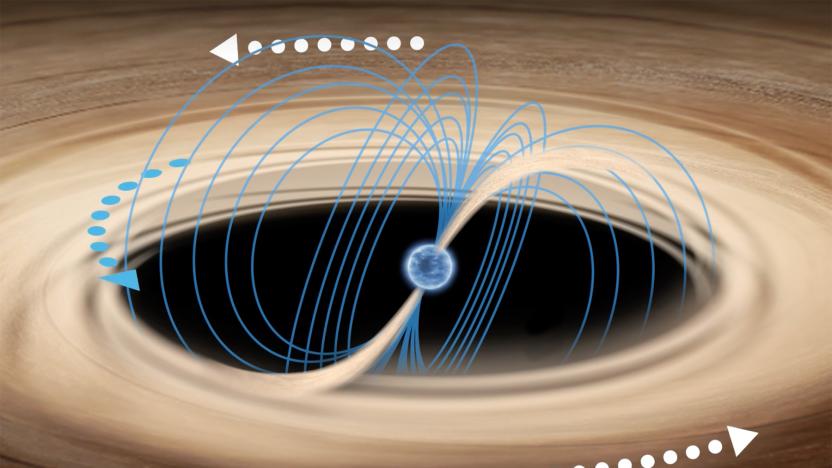xrays
Latest

Magnetic fields could explain an 'erratic' neutron star
Scientists think they've discovered why an unusual star system is emitting "sudden, erratic and extremely intense" bursts of X-rays. Using three different space telescopes, the team set out to investigate "Rapid Burster," a binary system first discovered in the 1970s, in 2015. It contains a small star and a "neutron star," the term given to collapsed cores of formerly giant stars. Normally, this setup would produce "type-I" bursts, as the dense neutron star strips the gas of its younger neighbor. The Rapid Burster does this too, but curiously it also exhibits rarer, high energy "type-II" blasts.

New periodic table element names confirmed, textbook makers sigh in relief
What's in a name? If you're the general assembly of the International Union of Pure and Applied Physics, then quite a lot. It's that bunch who have finally rubber-stamped the names of elements Darmstadtium (110), Roentgenium (111) and Copernicum (112) on the Periodic table. The trio are so named in honor of Darmstadt (where it was first created), Wilhelm Röntgen (discoverer of X-Rays) and Nicolaus Copernicus (explaining the universe since 1533). All three elements are "super-heavy", lab-created substances that rapidly degrade down into less interesting materials -- Copernicium-285 has a relatively long half-life of 29 seconds. The ratification went without a hitch, causing a sigh of relief amongst the textbook makers who have included the elements in the table for quite some time. Although we were hoping that element 111 would have to change its name back to the original, nearly unpronounceable unununium. [Image courtesy of the BBC / Talkback Thames]

Dutch researchers dust off X-ray machine from 1896 to compare it to modern equipment
This one is a bit shocking to us. X-rays were discovered in 1896, and recently, a team of researchers at Maastricht University Medical Center in the Netherlands pulled a machine from 1896 off the shelf for the purpose of comparing its results to modern equipment. The researchers say that this original equipment pumped out around 1,500 times more radiation than new equipment in order to produce its results. Speaking of those results, they are unsurprisingly less sharp and detailed than modern X-rays, but they still look pretty impressive if you ask us. The X-rays were conducted on a cadaver this time around rather than a living person because of the high levels of radiation. Full results will be published in the Journal Radiology this month.

Well-loved gaming consoles exposed in shocking x-ray portfolio
Gamers will no doubt be interested to see that their favorite consoles -- the Nintendo Wii, Microsoft's Xbox 360, and Sony's Playstation 3 (just to name a few) -- are just as beautiful to behold on the inside as they are on the outside. A courageous enthusiast named Reintiji's uploaded a whole set of x-rays to Flickr, and we have to say they turned out pretty artistic. There's one more image (of the Xbox 360) after the break -- but be sure to hit the read link for the entire, captivating set. [Via Technabob]

Scotch tape surprises everyone by producing X-rays
As far as we're concerned, sticky tape is mostly just for out-there modding projects, but scientists have confirmed another use for it: X-rays. After hearing word of research in that direction by Soviet scientists in the 1950s, researchers at UCLA peeled scotch tape at 1.18 inches per second in a vacuum chamber and found that X-ray pulses were emitted by the process. A human thumb has already been successfully X-rayed by this technique, and if future investigation proceeds swimmingly, paramedics and aid workers operating off the grid might be able to do X-rays without bulky and dangerous nuclear technologies. We'll admit it -- we never saw scotch tape X-rays coming, but then, neither did you, right?[Via Switched]

